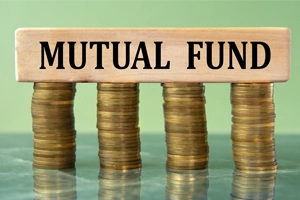
There are several ways to measure a mutual fund scheme's performance. These ways can help you understand how your funds are performing and make informed investment decisions. R-squared in mutual funds is one such metric. Let's find out more about this in the article.
What is R-squared in mutual funds?
Mutual funds follow a benchmark index. R-squared in mutual funds measures how closely a fund’s performance is correlated with its benchmark. A high R-squared indicates that the fund closely follows the benchmark, while a low R-squared signifies the fund's returns are less dependent on the benchmark. This implies that the fund follows an independent and active investment strategy and does not necessarily follow the benchmark index to a T.
How to calculate R-squared in mutual funds?
R-squared is calculated as the square of the correlation between a mutual fund’s returns and its benchmark’s returns. It is quantified using a 0 to 100 scale. An R-squared of 100 signifies that the fund perfectly mirrors the benchmark, while a lower value indicates less correlation.
- Here’s the formula for calculating R-squared in mutual funds:
R-squared = (Correlation)²
- Correlation can be calculated as per the following formula:
Correlation = Covariance between the benchmark index and the mutual fund’s portfolio ÷ Standard deviation of the fund’s portfolio × Standard deviation of the benchmark
The calculation of R-squared can be complex and time-consuming. It is normally calculated by financial analysts using Microsoft Excel. You do not have to calculate it on your own and can usually find the required data on the concerned Asset Management Company’s (AMC) website. You may also consult a financial advisor for a clearer understanding and interpretation.
How can R-squared be used to evaluate a mutual fund’s performance?
R-squared can help you understand if a fund is actively or passively managed. Here’s how:
- If the R-squared is high (70% to 100%): This indicates that the fund moves closely with the benchmark. For example, index funds usually have R-squared values close to 100% because they are designed to mirror the index.
- If the R-squared is low (0%–40%): This suggests the fund takes a more independent approach and does not track the benchmark closely. This usually means the fund manager is taking a more active investment approach.
You can use a mutual fund’s R-squared value to check whether your actively managed fund is truly active or just closely tracking an index. Actively managed funds usually have higher costs due to frequent trading, while index funds simply mirror a benchmark and come with lower fees.
If an actively managed fund has a high R-squared, it may be behaving like an index fund. In such cases, it may be more cost-effective to go for a low-cost index fund with similar performance.
R-squared vs. other performance metrics
Apart from R-squared, you can also use the following metrics to compare the mutual fund scheme with its benchmark:
- Alpha: Alpha helps you understand how well your mutual fund is performing compared to its benchmark. It measures the excess return a fund generates over the benchmark index. The baseline for Alpha is 0. If a mutual fund has an Alpha measuring 0, the mutual fund is performing at the same level as the benchmark. If the Alpha is greater than 0, the mutual fund is outperforming the benchmark, while an Alpha less than 0 indicates underperformance.
- Beta: Beta measures a mutual fund's volatility in comparison to its benchmark index. A Beta of 1 signifies that the fund is aligned with the benchmark. A Beta above 1 indicates higher volatility, and a Beta below 1 suggests the fund is less volatile and more in line with the benchmark.
Limitations of R-Squared
Here are some limitations of using R-square to gauge the performance of mutual funds:
- Not a measure of returns: A high R-squared is not a measure of the fund’s returns. Even if a fund closely tracks the benchmark and has a high R-squared, it can still underperform, and vice versa.
- Incomplete evaluation: R-squared alone does not offer a full picture of a fund’s performance. It is important to use other metrics, like Alpha and Beta, to gain a comprehensive understanding of how a fund is performing compared to its benchmark.
- Complex to calculate: R-squared involves complex calculations, which can be difficult to interpret and calculate.
Conclusion
The R-squared ratio in mutual funds can be a useful metric for evaluating how closely a fund tracks its benchmark. However, it should be used along with other performance metrics like Alpha and Beta to make informed investment decisions. While R-squared is helpful, it should not be the sole factor in your decision-making process.
An investor education initiative by Edelweiss Mutual Fund
All Mutual Fund Investors have to go through a one-time KYC process. Investors should deal only with Registered Mutual Fund (RMF). For more info on KYC, RMF and procedure to lodge/redress any complaints, visit - https://www.edelweissmf.com/kyc-norms
MUTUAL FUND INVESTMENTS ARE SUBJECT TO MARKET RISKS. READ ALL SCHEME RELATED DOCUMENTS CAREFULLY
Trending Articles
MUTUAL FUND INVESTMENTS ARE SUBJECT TO MARKET RISKS, READ ALL SCHEME RELATED DOCUMENTS CAREFULLY.















